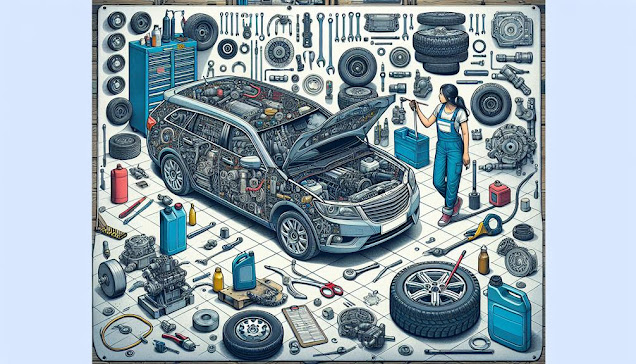Engine Block Cleaning Methods for Peak Performance
Maintaining the cleanliness of an engine block is a critical aspect of automotive repair, essential for ensuring the engine's longevity and optimal performance. While basic cleaning methods, such as using a degreaser and high-pressure water, provide a good starting point, they often only scratch the surface when it comes to addressing the deeper contaminants that can impede engine efficiency. For those serious about automotive care, especially within the realm of engine maintenance, a more thorough approach is often necessary—one that includes advanced techniques such as ultrasonic cleaning, thermal treatment, and chemical bath immersion. These methods delve deeper into the engine block, removing microscopic contaminants and stubborn residues that basic methods might miss.
Basic At-Home Cleaning Methods
For the average car owner, basic at-home cleaning methods offer a practical way to maintain an engine block. A commonly used approach involves applying a high-quality degreaser to the engine block to break down and lift off grease, grime, and other build-ups. The process typically begins by selecting a degreaser specifically formulated for automotive use, which ensures it is both effective and safe for the engine’s materials.
Once the degreaser is applied, it should be allowed to sit for a specified period, giving it time to penetrate and loosen the contaminants clinging to the engine’s surface. After the degreaser has done its job, a high-pressure water spray can be used to wash away the loosened dirt and oil. It’s crucial that the water pressure is strong enough to effectively remove debris without causing damage to delicate engine components. Ensuring that all traces of the degreaser and dirt are thoroughly rinsed off is vital to prevent any residual chemicals from potentially causing harm to the engine over time.
By regularly employing these cleaning methods, vehicle owners can significantly extend the life of their engines. Keeping the engine clean not only preserves its functionality but also contributes to maintaining the vehicle’s overall value. For those who take pride in their vehicles, this basic maintenance becomes a ritual, fostering a deeper connection with their cars and a sense of belonging within the broader automotive enthusiast community.
Advanced Professional Techniques
While basic cleaning methods are effective for routine maintenance, professional automotive technicians often turn to advanced techniques for a more comprehensive engine block cleaning. These methods, though more complex, are designed to address the deeper, more stubborn contaminants that can build up over time, ultimately enhancing engine performance and extending its lifespan.
One such technique is ultrasonic cleaning, which employs high-frequency sound waves to create microscopic bubbles in a liquid cleaning solution. These bubbles implode on the surface of the engine block, dislodging and removing even the most ingrained particles of dirt, carbon, and other contaminants. This method is particularly effective for cleaning intricate parts of the engine that are difficult to reach with traditional methods, ensuring that every nook and cranny is thoroughly cleaned.
Another advanced method is thermal cleaning, where the engine block is subjected to high temperatures in a controlled environment. This process effectively burns off stubborn residues such as grease, oil, and carbon deposits that may have built up over time. Following the thermal treatment, the engine block is often subjected to a blasting phase, where tiny steel shots are used to remove any remaining ash or debris. This method not only cleans the engine block thoroughly but also prepares it for any further inspection or machining that might be necessary.
Finally, chemical bath immersion is a technique used to remove particularly tough residues from the engine block. The block is submerged in a carefully formulated chemical solution that dissolves contaminants without damaging the metal. This method is highly effective for engines that have been exposed to particularly harsh conditions or have accumulated significant build-up over time. Technicians closely monitor the bath’s temperature and chemical composition to ensure optimal cleaning power while safeguarding the engine’s integrity.
The thorough cleaning of an engine block is not just a routine task; it is a critical aspect of ensuring that a vehicle remains in top condition. Whether through basic at-home methods or advanced professional techniques, maintaining a clean engine block is essential for the longevity and efficiency of the engine. Each cleaning method, from simple degreasing and high-pressure washing to more sophisticated ultrasonic cleaning and thermal treatments, plays a vital role in removing harmful contaminants and ensuring the engine’s continued performance.
As technology advances, so too do the methods available for engine block cleaning, offering more effective and efficient ways to maintain one’s vehicle. Whether you are an automotive enthusiast who enjoys taking care of your car at home or a professional technician dedicated to providing the best service possible, understanding and utilizing these cleaning techniques is crucial. They not only ensure the mechanical integrity of the engine but also uphold the standards of excellence within the automotive community, contributing to the overall health and longevity of the vehicle.



Comments
Post a Comment